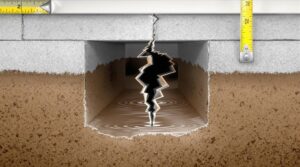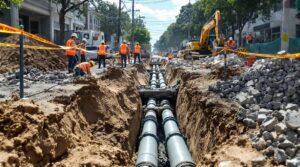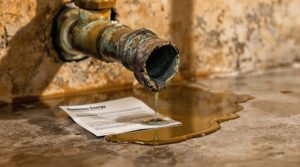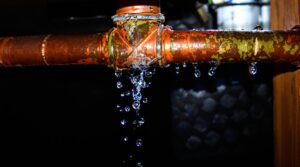Homeowners insurance may cover damage resulting from a water main break if the incident qualifies as a sudden and accidental occurrence. Policy terms and the underlying cause of the break are key factors in determining coverage. Coverage limits, deductibles, and exclusions may also apply. The process of filing a claim can be complex, and additional factors such as municipal responsibility come into play. Investigating the intricacies of homeowners insurance policies can offer more clarity.
Key Takeaways
- Homeowners insurance may cover water main break damage, but policy exclusions and coverage limits apply.
- Typically, municipalities are responsible for water main maintenance, which can affect liability and insurance coverage.
- Policyholders should review their insurance policy to determine if water main breaks are covered or excluded.
- Additional coverage options, such as riders or flood insurance, may be necessary to cover water main break damage.
- Insurance providers may require documentation and proof of ownership to process claims for water main break damage.
What Causes Water Main Breaks and Resulting Damage?
Aging infrastructure is a primary contributor to water main breaks, which can have devastating consequences for homeowners. The causes of breaks are multifaceted, including corrosion of pipes, shifting soil, and increased water pressure. Additionally, extreme weather conditions, such as freezing temperatures and excessive rainfall, can also put a strain on the water main system, leading to breaks. When a water main break occurs, the resulting damage can be extensive. Types of damage may include flooded homes and businesses, contaminated water supplies, and compromised structural integrity of buildings. Moreover, the aftermath of a water main break can also lead to costly repairs, displacement of residents, and even health concerns due to waterborne illnesses. Understanding the causes of water main breaks and the potential types of damage is essential for homeowners to take proactive measures in mitigating the risks and consequences associated with these events.
Determining Liability for Water Main Breaks
Who bears the responsibility when a water main break occurs, causing damage to homes and businesses? Determining liability for water main breaks is a complex process that involves various parties. Typically, the municipality or water utility company is responsible for maintaining and repairing water mains. If a break occurs due to their negligence or failure to maintain the infrastructure, they may be liable for the damages. However, liability determination can be nuanced, and multiple factors are considered, including the cause of the break, the location of the damage, and the parties involved. Municipal responsibility is often a key factor in determining liability, as they are responsible for ensuring the water mains are properly maintained. A thorough investigation is usually conducted to determine the cause of the break and assign liability accordingly. The outcome of this investigation can greatly impact the parties involved.
Understanding Homeowners Insurance Policy Coverage
While the municipality or water utility company may be liable for damages resulting from a water main break, homeowners often turn to their insurance policies for coverage. To determine the extent of coverage, it is crucial to review the policy's terms. Key aspects to examine include:
- Policy exclusions, which outline specific events or damages not covered by the policy.
- Coverage limits, which define the maximum amount the insurance company will pay for damages.
- Deductibles, which are the out-of-pocket expenses homeowners must pay before insurance coverage kicks in.
- Coverage for additional living expenses, in case the home becomes uninhabitable due to damage.
- Optional riders or endorsements that may provide additional coverage for specific events, such as sewer backup or flood damage.
Understanding these policy components can help homeowners navigate the claims process and determine the extent of their coverage in the event of a water main break. Since maintenance-related issues are typically not covered by standard homeowners insurance policies, it's important to properly maintain plumbing systems to prevent water damage.
How to File a Claim for Water Main Break Damage
When dealing with the aftermath of a water main break, homeowners should promptly notify their insurance provider to initiate the claims process. This involves contacting the insurance company's claims department and providing basic information about the incident, such as the date, time, and location of the break. Working with a public insurance adjuster can help maximize your settlement in complex water damage cases.
| Documentation Requirements | Description |
|---|---|
| Proof of Ownership | Documents showing ownership of the property, such as a deed or title |
| Photos and Videos | Visual evidence of the damage caused by the water main break |
| Repair Estimates | Detailed estimates of the cost to repair or replace damaged property |
| Police Report (if applicable) | A copy of the police report, if the break was caused by vandalism or theft |
The insurance provider will guide homeowners through the claim process, requesting additional documentation as needed. Homeowners should keep detailed records of all correspondence and interactions with the insurance company.
Preventing and Preparing for Water Main Breaks
Homeowners who have navigated the claims process following a water main break understand the importance of proactive measures to mitigate such incidents. Adopting water damage prevention strategies can greatly reduce the risk of costly repairs and minimize disruptions to daily life. Effective emergency preparedness involves a combination of knowledge, planning, and regular maintenance.
Some essential steps to prevent and prepare for water main breaks include:
- Inspecting water pipes and connections for signs of wear, corrosion, or damage
- Replacing old or faulty washers and gaskets in faucets and toilets
- Installing a water shut-off valve to quickly stop water flow in case of an emergency
- Keeping the water meter area clear of debris and obstructions
- Knowing the location of the main water shut-off valve and how to operate it








